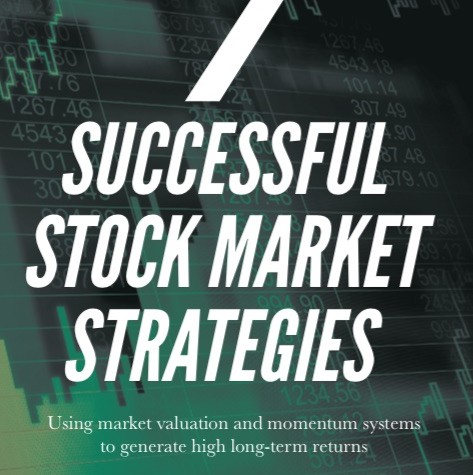Beat the professionals with this high-return, limited-risk FTSE 250 strategy

This is the fifth in the series of articles drawn from my new book 7 Successful Stock Market Strategies. The focus of these strategies is successful long-term UK equity tracker fund investment.
Summary of this strategy
This strategy combines two systems which I have covered in previous articles:
- The Market Valuation System
I explain in the book how you can build a current valuation of the FTSE 100 to compare with the current market price. These valuations can be used as buy and sell signals. When the current valuation is at least 105% of the market price, you buy. When the valuation falls to at least 95%, you sell. Since 1984, when the FTSE 100 commenced, each buy signal has always delivered a profit on the subsequent sell signal. These FTSE 100 buy and sell signals can also be used successfully to buy and sell the FTSE 250. Since 1986, when the FTSE 250 index commenced, each buy signal has always delivered a profit on the subsequent sell signal.
- The Market Momentum System
Sometimes panic drives the market into freefall, irrespective of fundamental valuations. This system is designed to shield you from the worst impact of these crashes. It identifies market exit and re-entry points, using moving averages of the FTSE 250 closing prices. I described this strategy in more detail in my previous article for Master Investor.
Freefall market exits occur rarely. There have only been three occurrences since the start of the FTSE 250. On two occasions the exits incurred a small loss but on the third occasion, during the credit crunch crash, a major gain was achieved.
Executing the Strategy
The simple steps to execute the strategy are as follows:
- Invest in a FTSE 250 exchange traded fund (ETF) when the FTSE 100 valuation is at least 105% and the Market Momentum System indicates that the market is not in freefall.
- Sell the FTSE 250 ETF when the FTSE 100 valuation has fallen to at least 95% or when the Market Momentum System indicates that the market has gone into freefall.
- Invest the sale proceeds from the ETF in a competitive instant-access interest-bearing deposit account until the situation in step 1 occurs again.
- When a market momentum exit has occurred, only reinvest in the FTSE 250 ETF when both the market valuation is at least 105% and the market momentum and re-entry signal has occurred.
Track Record of the Strategy
This Strategy has a very strong long-term track record. From 25 October 1987, when the first market by signal occurred, to the end of September 2015, the Strategy has delivered a compound annual return of 12.4%, after all costs and basic rate UK tax*. Very few professionals have been able to match, let alone exceed, this long-term return. £10,000 invested at the beginning of 1986 would have grown to £298,000.
Furthermore, the Market Momentum System has succeeded in limiting risk. On only three occasions have market exits incurred a loss, the maximum being 15.0%. In addition, this strategy does not require costly frequent trading. Only nine purchases have been made since 1986.
Choice of fund
You should choose a fund which replicates the performance of the FTSE 250 by investing in the physical securities, rather than in derivatives. Vanguard introduced last year a FTSE 250 ETF fund (VMIDD) which meets this criterion and which also has the benefit of a low 0.1% annual management charge. This is significantly lower than the 0.4% management charge of the i-Shares FTSE 250 fund, which has been used to calculate the track record. Had the Vanguard fund been available from 1986, the compound annual return quoted above would have been approximately 0.2% higher.
*Capital Gains Tax has not been taken into account since this depends on individual circumstances and is not incurred in tax-free wrappers such as SIPPs or ISAs.
To purchase 7 Successful Stock Market Strategies by Glenn for the special Master Investor price of £17.50 + P&P (RRP £24.99) for the paperback and £10.50 (RRP £14.99) for the ebook use the following promotional code when checking out at the Harriman House online bookshop: MASTER7SSMS.
Comments (0)